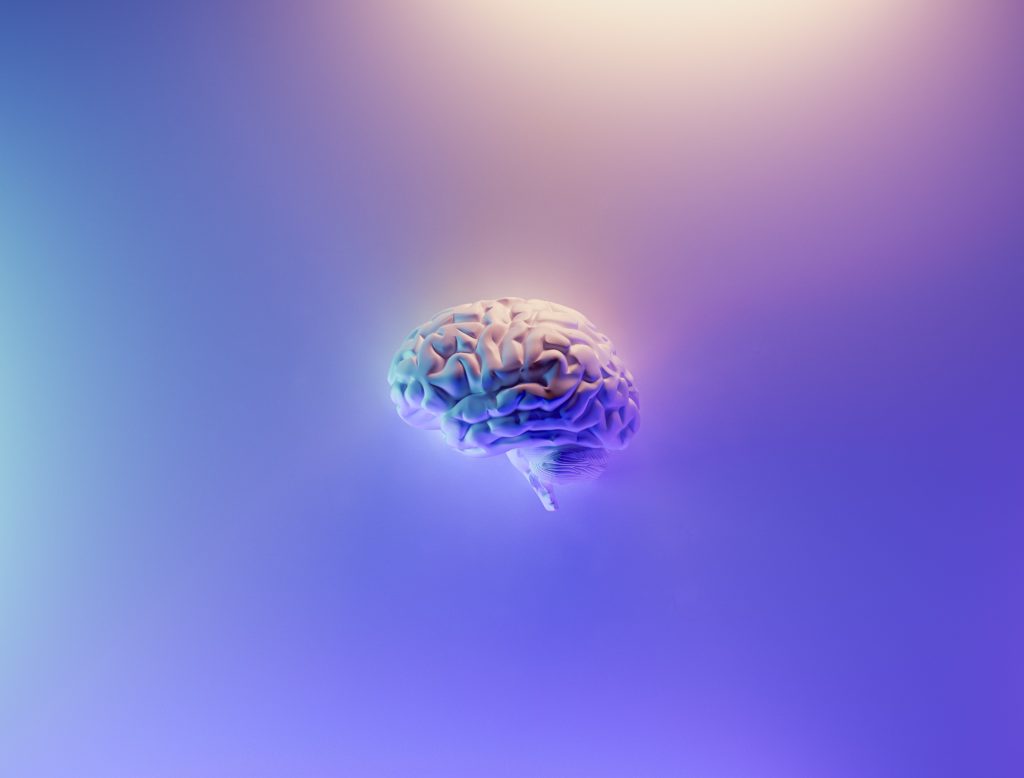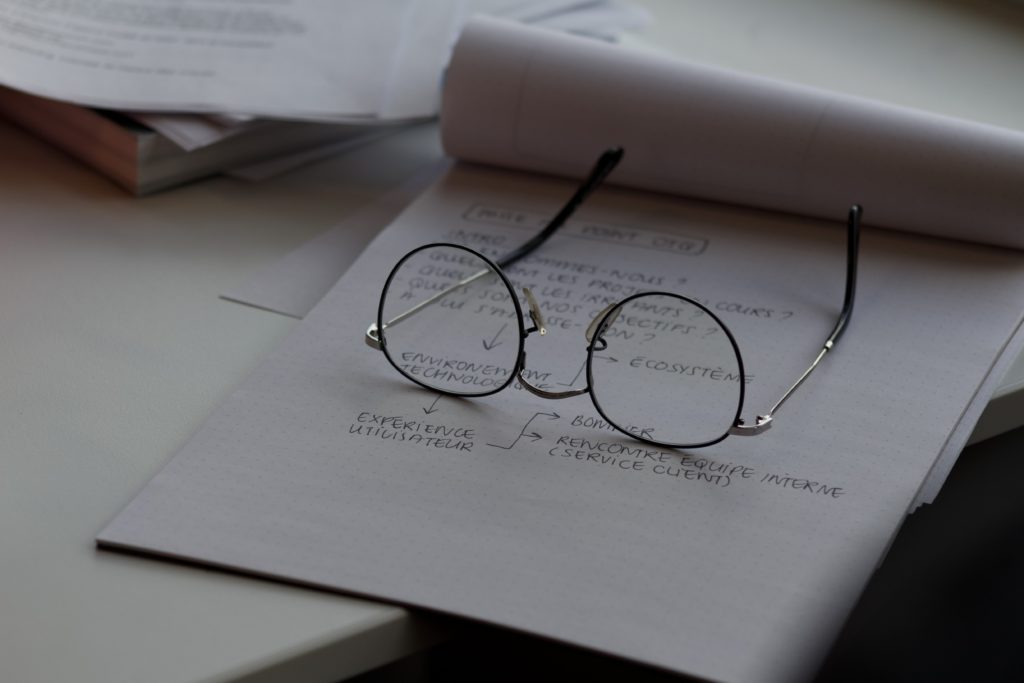Get a free mental health check and find out what therapy options are most appropriate for you. Kindly note that the We Level Up treatment center delivers different complementary therapies excluding biofeedback brain painting, at this time. Please call to find out more about our advanced therapy programs.
Brain Painting Therapy
Brain painting is a form of art therapy that uses electroencephalography (EEG) technology to interpret brain waves and produce images that reflect an individual’s mental and emotional state. Brain painting has been used as a therapeutic tool for individuals with mental health and addiction issues to help them process and express their emotions, reduce stress, and promote relaxation.
What is Brain Painting In-depth?
Brain Painting is a type of biofeedback-based neurofeedback therapy. It is intended to enhance brain function. It teaches patients to distinguish between a concentrated state and a daydreaming state without requiring a brain map. An evidence-based biofeedback technique called brain painting stimulates the brain’s innate capacity to create new connections in response to experience.
Brain painting is a neurofeedback therapy that measures and interprets electrical brain activity. Providing feedback on the brain’s electrical activity can help individuals learn how to control their emotions and thoughts to cope with stressors more effectively. The technique involves using EEG electrodes on the head connected to a computer that interprets the data in real-time.
Through visualizations of this data, participants can be taught to use relaxation techniques or cognitive behavior modification strategies through intense self-regulation activities. Neurofeedback sessions are typically repeated for users to achieve long-term benefits from brain painting. Research has shown that this type of therapy can increase self-awareness and help people to control their emotions better, reducing symptoms of mental health issues and aiding in addiction treatments.
Brain painting is a powerful tool for improving mental health and should be considered an alternative or additional treatment option for those struggling with mental illness.
Brain Painting for Mental Health & Addiction
Brain painting therapy proponents claim that the therapies offer a comprehensive means of assisting patients in overcoming addiction, despair, anxiety, mania, and social phobias.
During a brain painting session, an individual’s brain waves are measured through sensors placed on the scalp. The signals are processed through a computer software program to create images that reflect the individual’s mental and emotional state. The software analyzes the brain waves and translates them into patterns and colors that can be visualized on a computer screen.
Today, Brain Painting is used to help people with mental health issues, such as anxiety and depression, as well as substance abuse disorders. Brain painting can be useful for individuals struggling with mental health and addiction issues. It can help them explore their emotions and gain insights into their thoughts and behaviors. It can also promote a sense of relaxation and calmness, which can be helpful for individuals experiencing stress or anxiety.
Brain painting should not be considered a substitute for traditional medical treatment for mental health or addiction issues. It should be used as a complementary therapy in conjunction with professional treatment and therapy provided by a healthcare provider or addiction specialist.

Skip To:
How Does Brain Painting Work?
Neurofeedback or Brain painting is not a treatment but rather a way to control or regulate how the brain functions to achieve healthy brain function. This is accomplished through a series of practice sessions using a computerized neurofeedback program instructing your central nervous system to rearrange and control brainwave frequencies. To treat symptoms effectively, neurofeedback evaluates your brain and reveals information about areas of dysfunction that are producing them. Different neurofeedback tools and techniques are employed for various neurological issues.
Get Help. Get Better. Get Your Life Back.
Searching for Accredited Drug and Alcohol Rehab Centers Near You?
Even if you have failed previously and relapsed, or are in the middle of a difficult crisis, we stand ready to support you. Our trusted behavioral health specialists will not give up on you. When you feel ready or just want someone to speak to about therapy alternatives to change your life call us. Even if we cannot assist you, we will lead you to wherever you can get support. There is no obligation. Call our hotline today.
(844) 597-1011Brainpaint Therapy
Brainwaves resulting from millions of neurons firing simultaneously are the source of all subsequent events. The amplitude is defined by the number of neurons in the brain that fire at a particular frequency. Brainwaves have a variety of frequencies and are measured in Hertz. Different meanings are associated with each frequency spectrum regarding feelings, motion, focus, and creative expression. Problems arise when particular frequencies do not function properly for a given activity.
Each brainwave frequency’s performance is evaluated during a session, and feedback is given on how the organ may enhance that performance. Neurofeedback or Brain painting uses our ingrained urges to learn new and develop skills using feedback. A good lesson leaves an impact, just like everything else we learn.
Brain Paint Neurofeedback
A special form of biofeedback is neurofeedback (brainpaint neurofeedback). Neurofeedback or Brain painting works in these areas to enhance brain and central nervous system regulation and stabilization. Behavioral modifications may be impacted by brain activity modification. Real-time audio or visual feedback is given to the patient; whether it is positive or negative depends on whether the desired level of brain activity is attained. There seems to be some disagreement regarding the therapeutic value of biofeedback and neurofeedback in the care of patients with psychiatric problems. You can also look for brainpaint neurofeedback reviews on the internet.

Get Your Life Back
Find Hope & Recovery. Get Safe Comfortable Detox, Addiction Rehab & Dual Diagnosis High-Quality Care.
Hotline(844) 597-1011
What to Look for in a Neurofeedback Therapist
In their own practices and clinics, licensed mental health practitioners trained in using neurofeedback tools and software can offer neurofeedback or Brain painting services.
Find a therapist who not only has the necessary training and experience but also one with whom you feel at ease discussing personal matters, who demonstrates an understanding of your unique situation, and who can plainly and intelligibly explain the neurofeedback or Brain painting procedure, its potential advantages, and its limitations.
Types of Neurofeedback Training
All forms of neurofeedback or Brain painting entail monitoring and visualizing the brain’s activity patterns so that the patient can progressively learn how to alter its functioning. Neurofeedback training comes in various styles, each focusing on a distinct brain activity component.
- Slow cortical potentials (SCP)
- Hemoencephalography (HEG)
- Brain-wave training (BWT) or Frequency-band training (FBT)
In slow cortical potential training, patients learn to regulate the cerebral cortex’s general activity levels (excitability) as it responds to various inputs. Electroencephalography (EEG) is used in the feedback to gauge the brain’s electrical activity.
Patients who participate in hemoencephalography training gain the ability to actively regulate the amount of blood flow to various brain regions, which might theoretically boost or suppress various mental processes (depending on the brain area being targeted). Feedback is based on infrared light that either monitors the heat produced by brain activation and oxygenated blood levels (near-infrared) or measures the oxygenated blood levels in the blood (passive-infrared).
However, brain wave training, sometimes called frequency band training, is the most well-liked type of neurofeedback or Brain painting instruction. Different patterns of the brain’s electrical activity are measured using EEG. Patients learn to alter the strength or speed of various brain waves linked to distinct cognitive or mental states using this method. The notion is that these “healthier” brain wave patterns could eventually be accepted by the brain with ongoing practice and feedback; thus, the idea is that this could be a “training” of the brain over time.
First-class Facilities & Amenities
World-class High-Quality Addiction & Mental Health Rehabilitation Treatment
Rehab Centers TourRenowned Addiction Centers. Serene Private Facilities. Inpatient rehab programs vary.
Addiction Helpline(844) 597-1011Proven recovery success experience, backed by a Team w/ History of:
15+
Years of Unified Experience
100s
5-Star Reviews Across Our Centers
10K
Recovery Success Stories Across Our Network
- Low Patient to Therapist Ratio
- Onsite Medical Detox Center
- Comprehensive Dual-Diagnosis Treatment
- Complimentary Family & Alumni Programs
- Coaching, Recovery & Personal Development Events
Helping Neurological Disorders
According to studies, more than 60% of addicts also suffer from a personality or mental health condition. Undiagnosed mental health conditions can make living uncomfortable, challenging, or even deadly, and many people turn to drugs and alcohol to cope. Neurological illnesses like ADHD, anxiety, autism spectrum disorder, brain traumas, mood disorders, fibromyalgia, headaches, or sleep issues can all be treated with therapy.
Addiction is a primary, chronic disease of the brain’s reward, motivation, memory, and associated circuitry, according to the American Society of Addiction Medicine. Characteristic bodily, psychological, social, and spiritual symptoms result from dysfunction in these circuits. An individual who pathologically seeks reward and/or relief from substance use and other actions exhibits this disorder.
The fundamental idea behind the technique is that a person’s behavior may be changed by training their brain, like in the case of drug and alcohol addiction. Brain paint therapy effectively “rewires” your brain to eliminate destructive habits, and it has helped many people achieve long-term recovery. For an average of 20 weeks, once-weekly sessions comprise neurofeedback or Brain painting therapy. While some people require fewer sessions, others need more.
High-quality therapists provide one-on-one therapeutic contact at Neurofeedback centers. Clients are motivated by individual therapy, which also helps them develop new abilities, deal with trauma, teach target-relevant behaviors, and generalize desired behaviors to all relevant situations.
World-class, Accredited, 5-Star Reviewed, Effective Addiction & Mental Health Programs. Complete Behavioral Health Inpatient Rehab, Detox plus Co-occuring Disorders Therapy.
CALL(844) 597-1011End the Addiction Pain. End the Emotional Rollercoaster. Get Your Life Back. Start Drug, Alcohol & Dual Diagnosis Mental Health Treatment Now. Get Free No-obligation Guidance by Substance Abuse Specialists Who Understand Addiction & Mental Health Recovery & Know How to Help.
Neurofeedback and Anxiety
Numerous minor studies have been conducted to demonstrate the efficacy of neurofeedback in treating anxiety. Neurofeedback training decreased anxiety in each of these investigations. There must be much more thorough research conducted. Researchers have discovered neurofeedback to be consistently beneficial for anxiety at a NeuroDevelopment Center. When more effective treatments, such as cognitive-behavioral therapy, have not worked, taking neurofeedback for anxiety is advised.
Many folks struggling with behavioral or mental health issues gain by including specific prescription psychotropic drugs in their therapy regimens. Many different psychiatric services are available.
Additionally, combining neurofeedback with individual or family therapy is strongly advised. Neurofeedback typically speeds up the healing process in individual or family therapy by calming anxiety networks in the brain. Your assistance as your family members is essential to a full recovery. These meetings can be held by phone or Skype if you cannot attend in person.
The brain is where anxiety disorders have their roots, according to neuroscience. Drugs do not always address the underlying cause of the problem in the brain; they sometimes just treat the symptoms. Once the root of the issue is identified, neurofeedback training can be held to target the region of the brain that needs transformation specifically. Instead of just masking your symptoms, you can rewire your brain.

Brain Painting to Help Addiction
Addiction is a primary, chronic disease of the brain’s reward, motivation, memory, and associated circuitry, according to the American Society of Addiction Medicine. Characteristic bodily, psychological, social, and spiritual symptoms result from dysfunction in these circuits. An individual who pathologically seeks reward and/or relief from substance use and other actions exhibits this disorder.
Dopamine is released by many medicines, and this fills the reward system circuitry with pleasure signals. This neurological occurrence causes a rush of pleasure in the person. Due to its survival orientation, the brain retains this event and signals the user to continue abusing drugs.
The brain adjusts to the dopamine surges by creating less dopamine or reducing the number of dopamine receptors. The user experiences this as developing a tolerance to the substance. This approach may prevent the user from enjoying life to the same healthy degree as before using drugs.
The brain becomes more vulnerable to drug relapse, and cognitive functioning deterioration is two additional long-term impacts (the brain becomes conditioned to respond to certain drug use triggers like passing a bar, such that even when drug use ends, the brain is still sensitive to these environmental cues to use).
People are urged to evaluate their life and make changes to help them avoid circumstances that can lead to drug and alcohol usage at Neurofeedback Center. Individuals work with therapists with master’s degrees and seasoned counselors to understand their difficulties and make plans for better life without addiction. Due to the complexity of the disorder, treating addiction calls for a multidisciplinary approach. Although it can supplement current therapeutic approaches, neurofeedback is not meant to replace them. As evidence for addiction as a brain illness or disease grows, more treatment options, including neurofeedback, are becoming available.
Experience Transformative Recovery at We Level Up Treatment Centers.
See our authentic success stories. Get inspired. Get the help you deserve.
Start a New Life
Begin with a free call to an addiction & behavioral health treatment advisor. Learn more about our dual-diagnosis programs. The We Level Up Treatment Center Network delivers recovery programs that vary by each treatment facility. Call to learn more.
- Personalized Care
- Caring Accountable Staff
- World-class Amenities
- Licensed & Accredited
- Renowned w/ 100s 5-Star Reviews
We’ll Call You
Neurofeedback for ADHD
ADHD, also known as attention deficit hyperactivity disorder, can impact activity levels, learning, and impulse control. Symptoms might make navigating daily living and organizing difficult. The Centers for Disease Control and Prevention (CDC) calculated that 6.1 million children in the US, or roughly 9.4% of all children, have ADHD at some stage as of 2016.
Medication, psychotherapy, and lifestyle modifications are common treatments for ADHD in kids, but not everyone responds to them. Some methods, especially medications, can have negative side effects. Therapy using neurofeedback is non-invasive and drug-free. Some medical professionals think it can aid in the treatment of ADHD symptoms. This technique is also known as biofeedback or Neurotherapy.
The brain’s frontal lobe, in particular, may exhibit typical behavioral tendencies in someone with ADHD. This area is connected to learning, behavior, and personality. There is a link between how the brain functions and how someone behaves. The brain can alter in response to changes in behavior and the other way around. Neurofeedback aims to alter a person’s brain to alter their behavior. According to certain studies, those who have ADHD have more theta waves and fewer beta waves than those who do not. Theoretically, neurofeedback seeks to balance out this discrepancy.
The biofeedback sensors and monitor can theoretically be used to teach you how to keep your brain active while focusing or carrying out specific tasks. They can experiment with different methods to stay focused during therapy sessions to discover how it affects their brain activity. This could assist you in creating effective plans of action for when you are not connected to the sensors.
Sources:
Brain Initiative (nih.gov) The Brain Research Through Advancing Innovative Neurotechnologies® (BRAIN) Initiative aims to revolutionize our understanding of the human brain.
NIMH » A Milestone in Mapping the Brain (nih.gov)
EyeWire | A Game to Crowdsource Brain Mapping | CitizenScience.gov
The BRAIN Initiative | The White House (archives.gov)
US Government to Back Brain Mapping Project – New York Stem Cell Foundation (nyscf.org)


